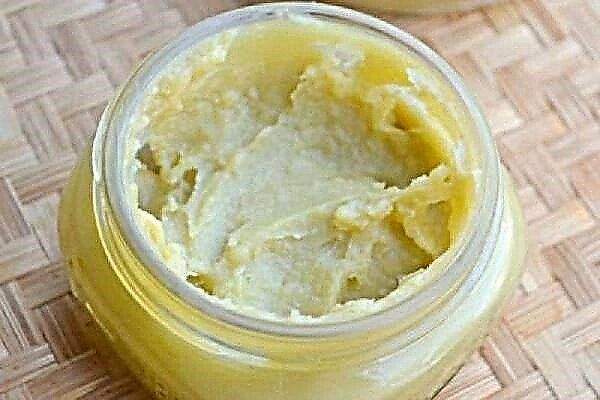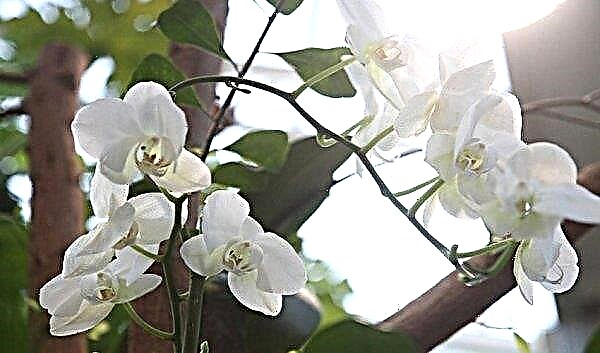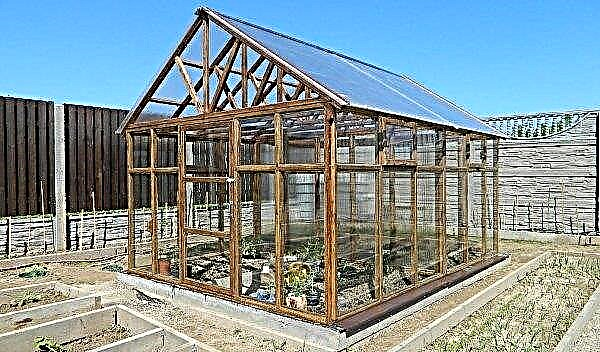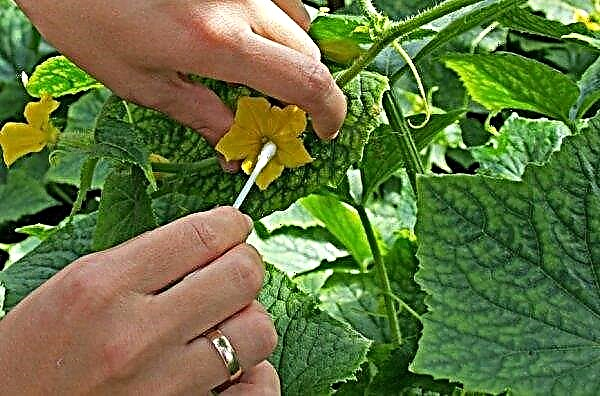Violet Malachite rose is a home plant with delicate flowering, which many gardeners dream of. If you are determined to grow this variety on your windowsill, study in advance all the subtleties of its cultivation. About where to place and how to care for a flower, read on.
Botanical description of the plant
LE-Malachite Rose is a standard hybrid Saintpaulia or Uzambara violet.
The flowers are light pink with an ash tint, the edges are light green. The buds grow up to 4 cm, less often up to 5 cm. Peduncles are long, so the flowers lie on the leaves. The leaf plates are dark green.
With proper care, blooms profusely for up to 5 months. The exact date can not be named, the senpolia blooms almost all year round. In this variety, alternate flowering succeeds without stopping.
The main conditions for growing violets at home
Lovers of violets will confirm: the microclimate for the Saintpaulia is one of the main components of successful flowering. This statement applies to the violet Malachite rose. When growing it, consider three factors: lighting, temperature, and humidity.
Placement and lighting
Optimal lighting - bright diffused light. A window sill near the west or east window is ideal. If the light is very bright, you can close the window with a light cloth or paper.
Daylight hours should be up to 14 hours. To extend it in winter, biolamps can be used.
Did you know? The violet variety Malachite rose was bred by the famous Ukrainian breeder Elena Lebetskaya in 2012.
Temperature and humidity
Violet needs a temperature of +18 ... + 24 ° C. Lowering it is undesirable. + 15 ° С - these are already dangerous indicators. Avoid drafts and sudden changes in temperature.
Keep humidity at 50-60% or higher. Malachite rose will harm dry air. Direct humidification from the spray gun is also unacceptable. If moisture is below normal, use a humidifier.
How to care at home
Measures for the care of malachite rose include watering, feeding, plant formation and transplantation.
Watering
In watering violets, flower growers name three rules that must be adhered to steadily:
- the substrate must be moist, but water stagnation is unacceptable;
- when watering, you can not moisten the leaves, stems and flowers;
- water for irrigation must be warm.

The frequency of watering depends on the indoor climate. It affects the rate of drying of the soil. Moisturizing is also important. The water guides use different watering methods.
It can be:
- watering along the edge of the pot (2 times a week);
- bottom watering through drainage holes (1 time in 1.5 weeks);
- wick watering, in which a rope is passed through holes for drainage and the ends are lowered into the water (enough for 2 weeks, ideal for vacation).
Fertilizer application
A flower needs micronutrient supplementation. For growth, he definitely needs nitrogen, potassium and phosphorus. Other elements and vitamins are also needed. For this reason, without fertilizer, malachite rose will grow poorly and bloom.
Fertilize the plant during the period of active growth. Feeding is especially needed during flowering. Feed the flower should be 1 time in 10-14 days.
On sale are funds specifically for the senpolis. These include the mineral preparation Mr. Color Saintpaulia.
Important! Fertilizer is prohibited in three cases: a month after transplantation, in case of microclimate disturbance and in case of disease development.
Pruning
To form a bush, 3 rows of leaves are left. The lower leaf plates are nipped off, while removing the petioles. Get rid of wilted flowers and foliage. Remove unnecessary parts as necessary.
Transfer
The plant is transplanted in the spring, preferably in March. The frequency of transplanting healthy violets is once every 2-3 years. The flower can be moved to a new pot in the case of withering Saintpaulia. Soil composition or disease could affect its condition. In this case, the transplant will save the flower.
Violets grow in loose, breathable soil. Due to the popularity of violet management, the soil for the senpolia can be found in any flower shop. You can prepare the substrate yourself.
To do this, mix:
- sheet soil (3 parts);
- turf soil (2 parts);
- peat soil (1 part);
- coniferous soil (1 part);
- vermiculitis;
- perlite;
- river sand in large fractions;
- crushed sphagnum.
 The pot should be small. You can simply change the substrate and put the violet in the same pot. If the root system has grown significantly, it is better to purchase a new container in diameter 2 cm larger than the previous one.
The pot should be small. You can simply change the substrate and put the violet in the same pot. If the root system has grown significantly, it is better to purchase a new container in diameter 2 cm larger than the previous one.The transplant process is as follows:
- A third of the pot fill the drainage mixture.
- Pour the substrate into the container.
- Moisten the flower and carefully remove it from the container (if only the substrate passes, perform this step first).
- Place the violet in a new primer.
- Add soil to the top of the pot.
- Water the plant.
Did you know? The natural habitat of the Uzbek violets is the mountains of Tanzania and Kenya.
How to propagate at home
The violet guides use three methods of plant propagation: cuttings, dividing the bush, and seed propagation. Each of the methods is associated with its subtleties.
Cuttings
Cuttings or leaf propagation is the most common method in amateur floriculture.
To do this, follow these steps:
- Nip off a leaf with a petiole 4 cm from the parent plant.
- Place the handle in a container of water, such as a glass.
- Wait for the roots to appear.
- Plant the stalk in a pot.
Some gardeners plant a leaf in a pot and wait for its rooting. The tank is immediately filled with drainage and soil for the senpolia. However, this method has a drawback - the process of root emergence is not visible. So the flower grower will not immediately understand whether the cuttings began or it can be thrown away.
Dividing the bush
If there are a lot of children on the bush, it can be divided:
- Remove the plant from the container.
- Remove the earthball.
- Divide the rhizome into sockets.
- Transplant into separate pots.

Seeds
Seeds are often bought, but they can be obtained independently:
- With a toothpick, transfer pollen to the pestle from the stamen.
- After 1-1.5 weeks, the ovary of the box will appear.
- Six months later, the seeds ripen.
- Remove and open the dried-up box.
- Using a needle and tweezers, remove the seeds onto a piece of paper.
- In a wide and shallow pot, pour the substrate for the senpolia.
- Make small furrows in the ground.
- Mix the seeds with sand and spread over the furrows.
- Close crops with glass.
- Leave the container in the light at a temperature of +22 ... + 25 ° С.
- Remove the glass regularly and moisten the substrate from the spray bottle.

Growing difficulties
The main difficulties in growing Malachite roses are diseases and pests. Often they appear when the grower violates the rules of care. First of all, check and adjust watering and top dressing.
Among the fungal diseases in violets are found:
Use fungicides, such as fundazole, to treat any fungus. If the disease persists, remove the plant from the flowerpot and burn.
Of the parasites on the malachite rose are often found:
- ticks;
- scale insects;
- false shields;
- thrips;
- worms;
- aphid;
- wood lice;
- nails
- whiteflies.
LE-Malachite rose is unpretentious, but needs regular care. With proper cultivation, this miracle of Ukrainian selection will please lush flowering for more than one month.Important! Prepare all preparations according to the instructions.













